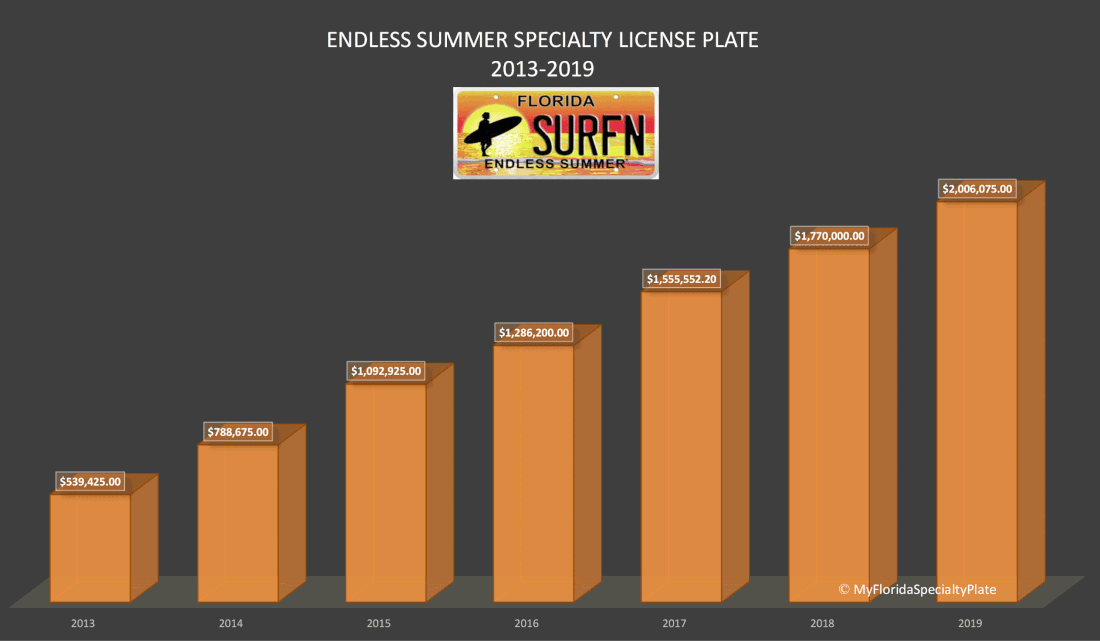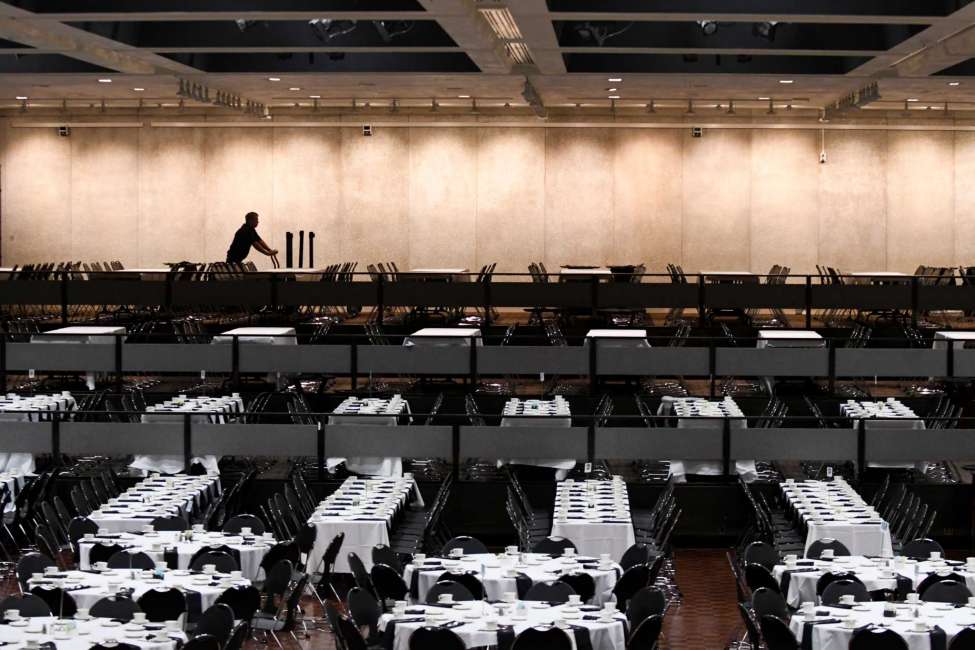|
Virginia lawmakers have passed legislation that will create a new license plate with the slogan “VB Strong” honoring the victims of a mass shooting in Virginia Beach. The bill sponsored by Sen. Bill DeSteph has passed unanimously out of both chambers and heads to the governor’s desk for his signature, The Virginian-Pilot reported Wednesday. The plates won’t be available until 450 people apply for them and pay a $10 fee that goes toward Department of Motor Vehicles operations by Nov. 20. “It was a horrific tragedy, and we felt like this was just one way that people could help memorialize the event and ensure that people know that the tragic events that occurred that day are not going to be forgotten,” said Scott Humphrey, a legislative aide for DeSteph’s office. The DMV offers more than 250 specialty license plates. 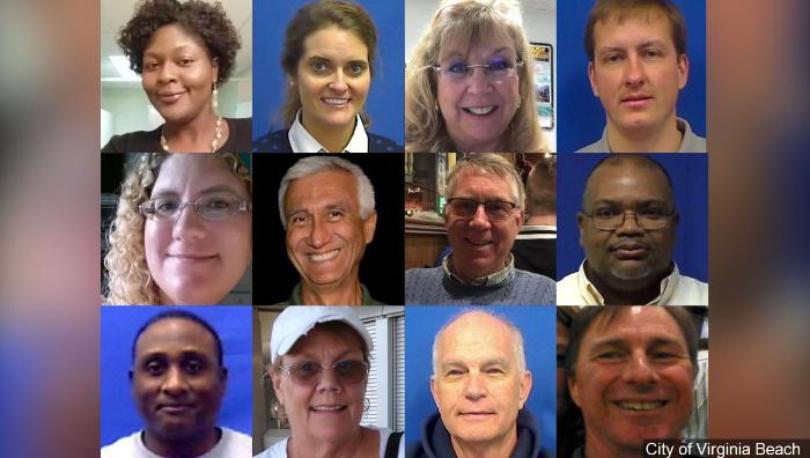 Top Row (left to right): Laquita C. Brown, Tara Welch Gallagher, Mary Louise Gayle, Alexander Mikhail Gusev - Middle Row (left to right): Katherine A. Nixon, Richard H. Nettleton, Christopher Kelly Rapp, Ryan Keith Cox - Bottom Row (left to right): Joshua A. Hardy, Michelle 'Missy' Langer, Robert 'Bobby' Williams, Herbert 'Bert' Snelling (Source: City of Virginia Beach/MGN)
0 Comments
The Washington Wine Institute, in partnership with the Washington State Wine Commission, is working with prime sponsor Rep. Kelly Chambers (RPuyallup) and lawmakers in Olympia this session to create a specialty license plate. If approved, revenue from the plate would be donated to the Washington Tourism Alliance (WTA) to support tourism efforts throughout the state.
“It would be thrilling to see a license plate to celebrate our state’s world-class wine industry,” said Steve Warner, President of the Washington State Wine Commission. “WTA is a perfect benefactor considering our 1,000+ wineries are a major tourism driver in the Northwest.” The Washington wine industry accounts for $8.4B in-state economic impact including 36,500 related jobs and $2.4B in wine revenue. In 2018, an estimated 2.6 million people visited wineries across the state. The Washington Wine Institute is currently collecting the 3,500 signatures needed for a new specialty plate as part of the approval process. Click here to sign the petition to push the wine plate forward. About 200 marketing and creative types gathered last August in Oklahoma City to start the process of giving Oklahoma a new look. It was a hard sell at first. People sat with arms crossed holding back some cynicism and started venting about the ills facing the state, from underfunded schools to high incarceration to frustrating politicians. Then Tulsa’s Blake Ewing raised his hand. “People wanted the chance to complain about the parts of Oklahoma not worth bragging about,” Ewing recalled. “I brought up that Nashville had bad public transportation. It’s not good, and they constantly fight over it. But the Nashville brand is Music City. They didn’t brand themselves Music City with Terrible Public Transportation. They have a good brand. “That’s what marketing is. It makes a compelling case for the unique attributes you have that are worth seeing. We’ve got so much good here worth sharing.” Ewing — the creative director of OKPOP and a member of the Tulsa World Community Advisory Board — changed the tone of the room. “That was a productive day,” Ewing said. “After that beginning — and even I was one of those sitting with my arms crossed — we said, ‘OK, let’s now start talking about what is great about us.’ We started engaging about those things with themes rising to the top. We worked hard to distill our thoughts about what gets at our personality traits of Oklahoma and things that make us proud to be Oklahomans.” Lt. Gov. Matt Pinnell led the effort to update the Oklahoma image. He argues that selling a state’s bright spots can go hand in hand with improving the troubling areas. “I’m a big believer in marketing in that if you do not invite people to a state, they will not come,” Pinnell said. “If you don’t court people to a state, they will not come. To court people, you have to make an investment. There are things we are fixing at the state Capitol at the same time. “At the end of the day, it comes down to sales. We can sell our positives while tackling the barriers we have in the state. It’s frustrating when a city or state runs short of money, the first thing they cut is marketing. That’s counter-productive. That’s the one thing reaching out in a positive way.” Last week, Oklahoma officials unveiled the state’s new image: a white star surrounded by multi-colored chevrons and the tagline “Imagine that.” Opinions heated up quickly. Imagine that. And there’s the punchline. The tagline is usually used as a sarcastic response, so it’s a risky move. Pinnell sees it differently. “It is all in how you use it,” he said. “I would describe it as a little bit of a swagger in the way we would be using it.” Think of being in a busy Dallas airport and seeing a photo of wide, open roads and the saying, “Oklahoma has 20-minute commutes. Imagine that.” Or billboards showing the innovative urban park of the Gathering Place. “America’s No. 1 new attraction is in Oklahoma. Imagine that.” Thousands of taglines were considered. Research involved responses from 13,000 online surveys and information from the volunteer group. It was noted that new visitors are usually wowed by tourism offerings and say, “I never knew Oklahoma had …” That sentence ends with anything from hiking and canoeing to the Bob Dylan archives and tribal attractions. 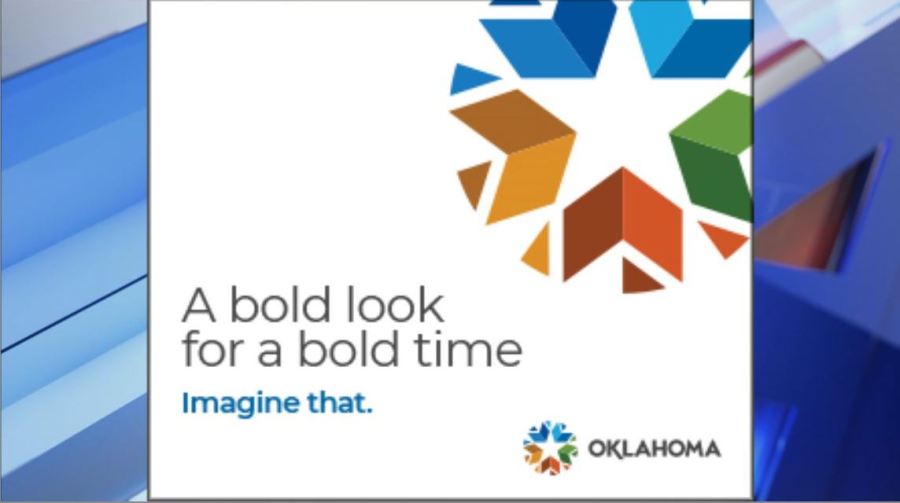 The Canadian firm We Are Operative was paid about $259,000.00 to manage the project. It did not provide creative services. Of that, $100,000.00 was donated by the MidAmerica Industrial Park in Pryor and the Chickasaw Nation, and the Oklahoma Business Roundtable provided about $30,000.00. Pinnell said officials wanted to get a consensus among Oklahoma marketing experts rather than choosing one. “We were very sensitive to the buy-in we wanted to have from Oklahomans,” Pinnell said. “To pitch to them we wanted their public service then select an Oklahoma company, I didn’t believe that would be very genuine. We wanted to be open and honest with why we went with who we went with.” The brand is being implemented across agencies with an eye toward redesigning web pages for better access and easier-to-understand navigation. The state hired a brand manager at a salary of $100,000.00. State funds for the project and new position are coming out of the existing budget of the Oklahoma Department of Commerce. “We’ve been through this before. Anyone who likes it isn’t going to send email or comment. People who like something will like it and go on. So we are only hearing from people who don’t,” Ewing said. “It’ll be like the Nike logo. We don’t have to explain its meaning or simplicity. That’s what this will become, too. Sales of the Florida Endless Summer specialty license plate have grown 272% since 2013, now surpassing $2 million in 2019 and is now the second most popular specialty license plate out of 122 specialty plates in Florida. Funds are used for programs which include educating the general public regarding the history of surfing as a sport and as a recreational activity; providing support for lifeguards at high risk beaches to aid in the protection of the public who utilize such beaches; providing support for environmentally friendly activities; providing educational programs, including publication of articles and hosting and supporting forums and events; and for developing and supporting activities designed to assist in preserving and protecting the shoreline and the delicate ecosystems residing therein. The Endless Summer slogan is used under license from Bruce Brown Films, LLC.
Prior to 1964, the media saw surfers as rebellious thugs, and Hollywood made them out to be a bunch of idiots. Filmmaker Bruce Brown single-handedly changed that with The Endless Summer. It portrayed the wave as a kind of Holy Grail and surfers as knights on a quest. In one stroke, he replaced Hollywood’s buffoonery with the popular mythology that endures today. The Endless Summer was Brown’s sixth surfing film in a career that started almost accidentally and proceeded according to the guerrilla template of the times — shoot all winter, edit in the spring, run your ass off all summer showing the damn thing (including doing your own live narration) in school auditoriums and small halls, then pack up for another winter on the road and do it all over again. With The Endless Summer, Brown broke that mold. The "Steve Jobs loophole" for California Temporary License Plates - Michael Towner, Iconic Legacy1/31/2020 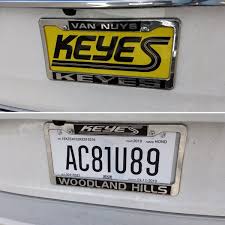 California did not issue temporary license plates for new vehicle purchases until 2019. Prior to 2019, California was unusual among the U.S. states in not requiring any form of temporary license plate. Vehicle dealers were still required to electronically report sales of new vehicles to the DMV, but they were only required to print out a DMV report-of-sale form at the time of sale. Newly purchased vehicles typically drove around for a month or more with nothing but a dealer's advertisement or logo on a paper plate insert where the license plate would go, and the DMV report-of-sale form was instead taped to the windshield. This made the new vehicle essentially "untraceable" both by plain visual observation by persons, and by automated means such as license-plate reading systems, red light cameras, and automatic number plate recognition.  This led to an epidemic of drivers of newly purchased vehicles cheating tolls on bridges and toll roads where a transponder system is used instead of toll booths, causing the state to lose $15–19 million per year. Because of this, new state legislation was adopted in 2016 requiring temporary license plates in California beginning in 2019. The DMV's reporting system was modified so that dealers could print out the temporary license plates on special paper. The law was inspired by the hit-and-run death of a pedestrian who was struck by a car with dealer paper inserts, and because it had no temporary plates it was impossible to trace the suspect. California's previous lack of a temporary plate requirement was jokingly known as the "Steve Jobs loophole" due to the one-time Apple CEO's habit of keeping rolling six-month leases on a series of Mercedes-Benz SL55 AMGs specifically to avoid having to put license plates on the cars. California's previous lack of temporary plates was also taken advantage of by criminals, who knew that a car driving with a dealer ad paper insert was both untraceable and did not raise suspicion. An embattled nonprofit with close ties to top state lawmakers, the NYS Association of Black & Puerto Rican Legislators, in 2017 hired a prominent Albany lobbyist to boost its fundraising capabilities, according to newly released tax records. The hiring of Patrick B. Jenkins and Associates paid off, as the nonprofit, which is the focus of an investigation by the state attorney general’s office, raised substantially more revenue and gave out almost as much scholarship money to needy youth as it had for the three previous years combined. Even before Jenkins’ hiring, questions had been raised about the lawmakers’ charity receiving significant funding from interests with business before the state Legislature. Jenkins, meanwhile, in the past has raised significant campaign dollars for lawmakers by soliciting donations from its own roster of influential clients, then lobbying some of those same state lawmakers for the clients. The filings also reveal several inconsistencies in the charity’s previous filings submitted to Attorney General Letitia James’ office, and raises more questions about the charity’s spending for that year and those prior, including how much money it was giving to students in need. The group’s new filing, which covers the 2017-18 tax year, is a focus of the state attorney general’s probe, according to a source with knowledge of the matter. The tax documents apparently were posted to the attorney general’s website within the last two days. A spokeswoman for the attorney general’s office declined to comment, citing its ongoing investigation. Assemblywoman Latrice Walker and Assemblyman Gary Pretlow, the nonprofit’s chairwoman and treasurer, respectively, did not return calls for comment. A spokesman for the association, Hank Sheinkopf, said Walker restructured the organization when she took over as chair in 2017. “A new accounting and auditing team has been hired and the attempt is to ensure that everything is being complied with and all filings are being brought up to date,” he said. Click here for more info.
 As of December 31, 2019, the California Legacy specialty license plate is now on 820,426 California registered vehicles and raised $26,886,737.00 in 2019. This is up from 669,083 in December, 2018. The Kids plate is the closest by volume, which is now at 104,969, down from 107,721 in 2018 and raised over $3 million in 2019. The Whale Tail specialty license plate is now at 76,765, down from 79,934 in 2018, and raised $5,086,534 in 2019. The Arts specialty license plate is now at 48,270 (down from 50,485 in 2018) and raised $3,182,981.00 in 2019. There are 13 California specialty license plates. 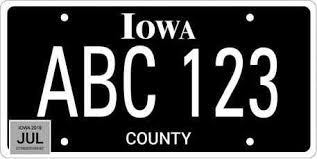 92,000 Iowa Blackout plates have been issued since they were introduced on July 1st of 2019. That's triple the number of University of Iowa plates, which was previously the most popular specialty plate. Paul Cornelius with the Iowa Department of Transportation says the agency had no idea the blackout plates would be so wildly popular. "The way that this has grown so fast and been so successful, ya, it's been kind of eye opening and shocking," said Cornelius. By comparison, there are just over 30,000 University of Iowa specialty plates currently in use. Those plates have been in existence since 1989. There are roughly 19,400 Iowa State University plates in use, which is the third most popular in the state. The blackout plates are also among the most expensive specialty plates in Iowa. They cost $30.00, and spike to $60.00 if they're personalized. Iowa and Iowa State plates sell for $25.00 and jump to $50.00 if personalized. Revenue generated from specialized license plates flows into the "road use tax fund", which is used for repairs and infrastructure upgrades. Cornelius says money from the blackout plates, which generated roughly $4 million in their first six months, will help at a time of need for the fund. "You know how bad the flooding has been this year," Cornelius said. "There's just a lot of repairs that have to have been done from a lot of that stuff. This fund, it's kind of like that's a big pot that it goes to." Still, 94% of all license plates issued in the state are the standard county plates. $932 million is generated from vehicle registration fees, of which license plates are a small portion. In six months, the 'Blackout' plate has already raised nearly twice as much as the 2019 top selling plate in Florida, where there are nearly double the amount of registered vehicles. Donors are pouring money and goods into Australian bushfire relief efforts, as organizations struggle to direct the contributions to where they can do the most good. Charity directors say some donors likely have only a vague sense of where their money is going. A Facebook fundraising event for a rural fire service that had a goal of $20,000 took in $34 million, making it the largest one ever on the platform. A fire commissioner said the organization will likely spread around the windfall to fire victims or other fire services. Meanwhile, the Australian Red Cross has raised about $67 million in individual contributions since July 1, compared with $7.5 million during a drought appeal last year. And a wildlife rescue group in New South Wales has raised $9.6 million, likely siphoning off donations to other regions as donors may have thought they were contributing generally to help animals caught in the inferno. Australian philanthropist Andrew Forrest is touring the U.S. seeking support for efforts to prevent and mitigate fire disasters worldwide. He and his wife, Nicola, have pledged $48 million through their Minderoo Foundation in response to the bushfires raging in Australia. The foundation has set up a fire fund to accept donations and hopes to raise more than $344 million for fire-resilience efforts.
 LifeWorks continues their fight to end youth homelessness in Austin this year with a brand-new affordable housing facility for young people and families. The Works II is a 29-unit building in east Austin, adjacent to their existing facility. The grand opening is January 21. There are two bedroom, one bedroom and efficiency units to fit the needs of each individual client. Their stay can range from one to two years, or even longer if that’s what they need to get on their feet. “When we have youth coming right off the street and into an apartment, this could be their very first home,” Hanckel said. “To see our clients and youth walk in and burst out into these big smiles and their eyes well up with tears, it is such a heartwarming moment.” With each unit, a step closer to their goal. In November 2019, residents began moving in to the Works II, and the building is currently at 72% capacity. “That may not seem like a lot. It may seem like a very small number given the work that we have to do,” said LifeWorks Director of Communications and Marketing Julianne Hanckel. “But as we continue to move forward, and we continue to spread awareness, we really want to create that feeling that this is achievable.” The goal they’re hoping to achieve: becoming the first major city in the U.S. to end youth homelessness by December 2020. They base their success off the government definition for “functional zero.” That means the number of young people entering homelessness is equal to the number of young people who are being housed. Hanckel said right now, LifeWorks has identified 450 youth, aged 18-24, in need and he said they are “on track,” but there’s an exact dollar amount they need to achieve “functional zero”: $4.9 million. “We’ve spent years trying to pinpoint the amount needed financially to scale our programs, hire the staff and address the numbers of who are in need of the most immediate services,” Hanckel said. The money will be used for not only housing and shelter, but programs to make homelessness rare, brief, and non-recurring for these youth. “That means we address their homelessness and then exit them from it in 30-45 days,” Hanckel said. LifeWorks will also partner with other groups to get young people jobs, a GED, or counseling, enabling them to keep a roof over their head. “This is a solvable problem,” she said. Click here, for more info on Lifeworks
 Instagram announced the platform is testing hiding “like” counts in the US after similar tests in countries including Australia, Japan, Canada, and Brazil. Facebook has also begun to trial this formula in Australia, and Twitter may come on board as they consider how to create “healthier conversations” on the platform. But what will this mean for brands and the $6.5 billion influencer industry that has given them an inside view into their customers? When Instagram tested likes in Canada, a study found that 41% of Canadian content creators said engagement dropped after Instagram like counts were hidden in the country. Creators who have had their likes hidden were also 2.5 times more likely to report not posting as often. This could cause major problems for brands relying on the platform and content creators as a primary form of engagement. Without likes, social media could become a stagnant form of customer engagement and with regulation over social media at a tipping point, brands may need to look elsewhere to interact with their customers and maintain loyalty. One platform that brands can utilize to create better customer engagement is messaging apps. Let’s explore the benefits of these platforms for customer engagement in a world without likes.  Nearly a third (31%) of consumers regard their interactions with brands as merely transactional, creating a major opportunity for brands to engage in meaningful interactions with consumers. On Instagram or Facebook, for example, when consumers follow a brand they experience a one-way engagement. The consumer sees the content the brand is pushing out, whether it’s a new product announcement or a tutorial, and the interaction often ends there. Messaging apps provide a unique opportunity for customers to engage directly with brands through two-way interactions. One-to-one contact between brands and customers is a building block for customer loyalty and the more personal experience available on messaging apps, such as direct and immediate customer service, can create a differentiator that keeps customers coming back in the future. Additionally, the adjustment to messaging apps is easy for consumers, as more than 2 billion people around the globe already use mobile messaging apps in their personal life to connect with friends or family. Instead of being inundated with influencer brand posts – 17% of companies are spending half of their Marketing budget on influencers and hyper-targeted advertising – the ability for consumers to opt-in or opt-out of communication with a brand creates more meaningful engagements between the brand and the consumer. Users can opt to follow a brand directly to engage in communication, receive customer service support through real-time chats or chatbots or receive alerts about special deals and new products. Because consumers are consciously choosing to receive this information from a brand, with the ability to stop the communication if it becomes overwhelming or unnecessary, it creates more positive interactions between users and brands. It also helps brand ROI, as highly-engaged customers will buy a product or service 90 percent more often and spend 60 percent more per transaction.  Many social media platforms have been caught in a stream of privacy scandals over the past two years, particularly related to the use of consumer data. In fact, nearly two-thirds of Americans believe it’s not possible to go through daily life without companies collecting data about them. Furthermore, 81% feel they have very little or no control over the data that companies collect from them and 79% are concerned about how companies use that data. Many messaging apps have taken a more forward-thinking approach to privacy by integrating end-to-end encryption into the platform to keep consumer data safe. With this model, users don’t need to worry about whether their data is being collected by brands or third-parties that will serve them unnecessary ads and potentially put their information at risk for a data breach. While only time will tell how social media will evolve without the impact of likes, when reevaluating priorities for 2020, brands should consider updating their strategies to focus on engagement strategies outside of social media to create more valuable engagements, instill consumer loyalty and provide user privacy.  Even with the popularity of social media, email still provides a unique set of benefits that other media channels struggle to match. There are many developments in email marketing that will help it remain the leader in digital marketing and eTargetMedia forecasts that email will propel to the top of every smart marketer’s campaign initiatives. Mobile browsing and mobile email have now surpassed desktop browsing in terms of traffic and email open rates. Across all digital marketing channels, marketers are realizing that websites and emails may need to be prioritized for mobile as we move into 2020 and not just optimized for mobile. Email marketers will need to make improvements to optimize for mobile emails including making copy easier to read on mobile devices, optimizing images for mobile and making the overall design and layout more friendly for mobile rendering. Artificial intelligence may sound overwhelming when it comes to email marketing but in most cases AI in email marketing relates to the automation of email messages. Email marketing automation focuses on providing relevant content to a specific individual at the most relevant time.  In 2020, emails are expected to become more interactive. Interactive elements like email carousels, embedded video, drop down menus and other interactive features will be added to email messages making them more interactive in the inbox. In the new year, eTargetMedia predicts that email subscribers will be interacting more with emails before they reach the landing page. Email marketing in 2020 should be all about creating a customer-centric experience. Brands are realizing that they can keep emails fresh and personalized by leveraging new email technologies, artificial intelligence, new design models and mobile optimized designs. The content of email in 2020 needs to be engaging, interactive, and personalized, all while respecting the user’s privacy and data. Partial source: Cristina Constandache, MarTech
|
BLOGArchives
January 2025
Categories
All
|


